Europe
Ukraine liberated Kherson city; a year later, Russian bombs still rain down
The Washington Post November 14, 2023
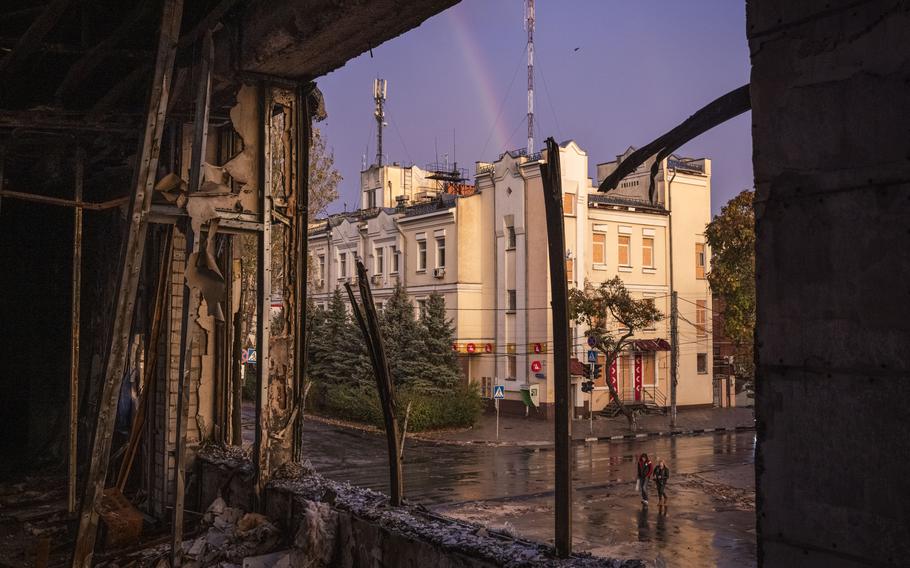
A destroyed building in Kherson, Ukraine, on Nov. 1, 2023. (Ed Ram/for The Washington Post)
KHERSON, Ukraine — Oleksandr Andrienko lay in a hospital ward in Kherson, his face pale and exhausted, blood still seeping from the bandage around the stump of what had been his lower left leg.
Two days earlier, a shell fired by Russian forces just across the Dnieper River had crashed through the front of his car at a checkpoint leaving the village of Beryslav. In the basement of what remained of the nearest hospital, as shells continued to rain down on the village, a military surgeon performed the amputation using only local anesthetic. Andrienko remained awake the whole time.
Andrienko is one of scores of civilians who have been maimed or killed in recent months as Russia has continued to relentlessly bombard the southern city of Kherson and the surrounding region — an area that it once occupied and that Russian President Vladimir Putin, defying reality and international law, still insists is now part of Russia, a year after Ukraine pushed his troops back across the river.
Ukrainian forces in recent weeks have stepped up their dangerous river crossings, aiming to establish new positions and push Russian lines on the east bank back even farther. Moscow, meanwhile, seems to have given up on the idea of winning popular support for reoccupation.
Instead, Russia has intensified its bombing of Kherson, apparently intent on demolishing the city and its residents — lobbing artillery, dropping bombs from planes and firing ballistic missiles.
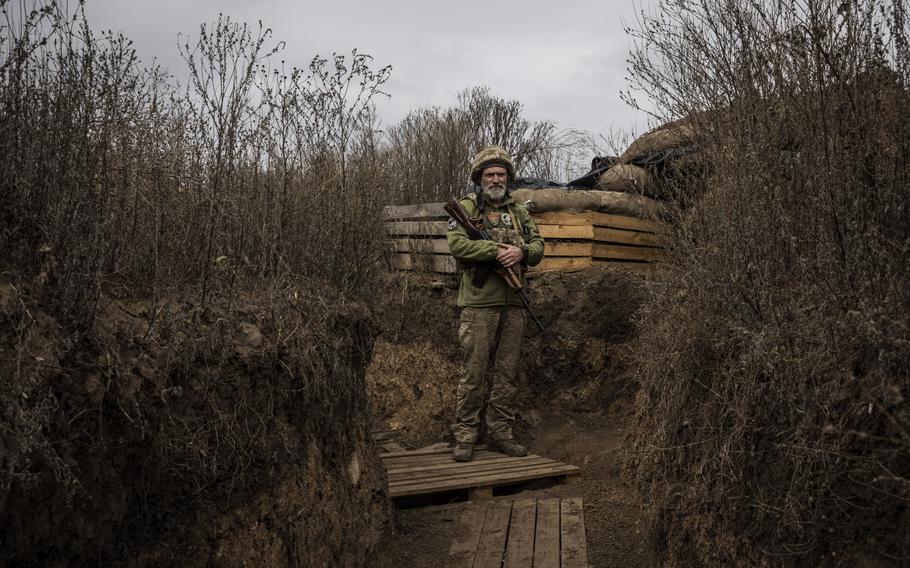
A Ukrainian soldier in the Kherson region. (Ed Ram/for The Washington Post)
Bombardments are now a nightly reality for residents who remain in Kherson. And as Ukraine has cranked up efforts in its flailing counteroffensive to cross the Dnieper River and establish positions on the occupied east bank, officials and local doctors say that attacks on the city — and civilian casualties — have increased.
In Andrienko’s home village of Kozatske, on the river about 50 miles northeast of Kherson city, only 200 people — less than 10 percent of residents — remain. They have learned to live under near-constant bombing. Two weeks before the strike that took Andrienko’s leg, a Russian drone dropped a grenade on his car at a checkpoint, he said, puncturing his shoulder with shrapnel.
“Our village is almost gone,” he said. “They shoot sometimes from tanks and guided aerial bombs. They destroy everything. I don’t know why they shoot like that. Our population is simply being destroyed.”
Last month, Russia fired 2,706 shells at urban settlements in the Kherson region, killing eight people and injuring 80, according to the local administration.
Leonid, a doctor at one of Kherson’s five hospitals who said he was captured and tortured by the Russians during the occupation, said settlements along the river have been disproportionately targeted.
“It’s only 500 meters to a kilometer to enemy lines,” said Leonid, who asked to be identified only by his first name, because he feared repercussions. “They want to intimidate us and break the strength of the people.”
“Is there any logic in their heads? They just stupidly follow the orders of their bald boss,” Leonid said, referring to Putin. “They are terrorizing people, thinking they will break. And by breaking the people they somehow believe that they will be greeted back with bread and salt.”
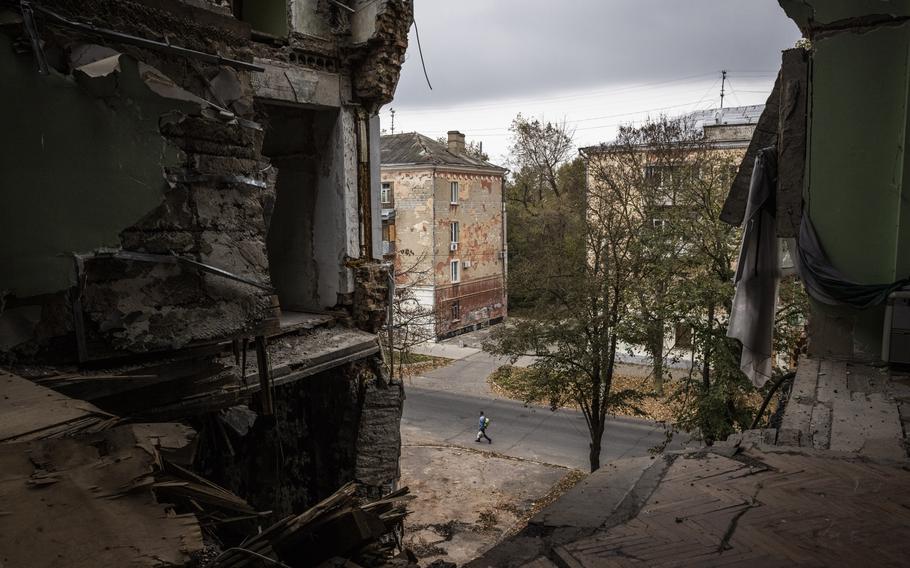
Damage to a regional administration building in Kherson, Ukraine, seen on Nov. 1, 2023. (Ed Ram/for The Washington Post)
Russia’s intensified attacks also reflect a stronger push from the Ukrainian side, which has ramped up its counteroffensive along this part of the front.
“Yesterday I was standing on the balcony and counted how many of our shells flew in their direction. I was very happy,” Leonid said. “It was nice to hear the couple of bangs outgoing, and then I started counting: One, two, three ... 10.”
“The Russians can see that our soldiers are shelling them more intensively,” he added, “so they respond by hitting more energy infrastructure to break us down to prepare for winter.”
Over the past month, Ukrainian marines appear to have successfully established a modest bridgehead, securing positions on the east bank along the settlement of Krynky. Infantry and reconnaissance groups have since been trying to push south from there.
But with the river serving as a natural and complex front line, Ukraine faces a gargantuan task.
Crossing the river, on average, takes a hair-raising 20 minutes. Because of the unpredictable conditions and exposure to enemy drones, the orders for each mission are always received at the last minute. Soldiers must then move fast.
Staggered groups of six to 20 men depart at all times of the day, but more often at night when their boats can move under cover of darkness. Still, the start of an engine is enough to tip off the Russians.
Sometimes the Ukrainians use inflatable dinghies. Soldiers already on the east bank communicate by radio to tell those trying to cross whether and when they should move. The Russians also use thermal imaging to monitor the river.
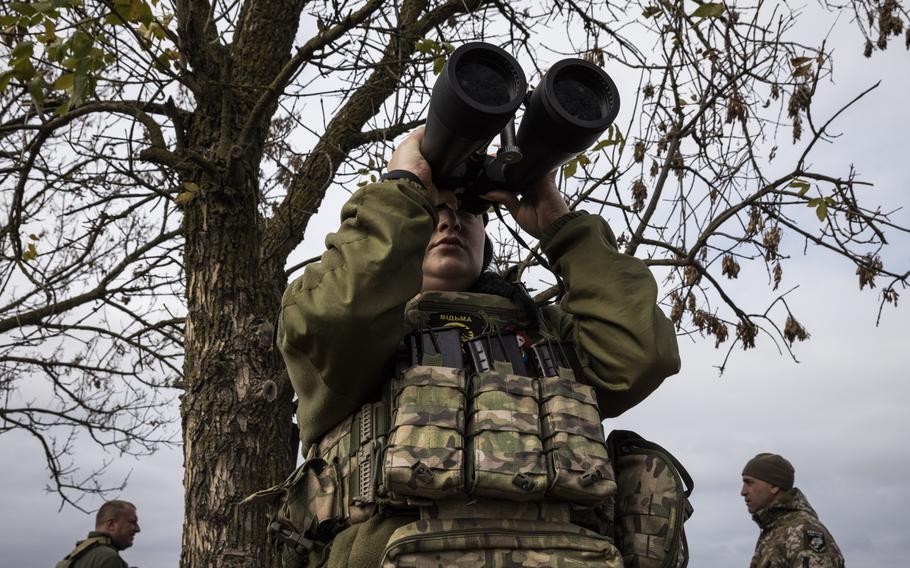
A Ukrainian soldier watches for Russian drones in the Kherson region of Ukraine. (Ed Ram/for The Washington Post)
Maksim, 47, the commander of a tank company who frequently leads groups of soldiers across the river, said the crossings were too dangerous for inexperienced soldiers.
“Only a fool is not afraid,” Maksim said. “The most dangerous part is getting in and out. As soon as we begin, they immediately shoot at us — every boat is a military target.”
Meanwhile, the regional capital that Ukrainians are trying to defend is torn between two realities.
One of Kherson’s streets, Nebesnoyi Sotni, reflects this strange duality. On one side of the street, people wait patiently in line for the bus as fathers lead their children by the hand on the walk home. Men play soccer on basketball courts.
On the other side of the street is a trail of destruction from recent strikes: A shattered residential building and cafe. A crater in the middle of the pavement from a small aerial bomb. Shrapnel blown into the side of a puppet theater. A damaged roundabout hit by a drone a week ago.
Unlike in many front-line cities, Kherson’s supermarkets and restaurants are functioning and full. Critical infrastructure has been restored. Streets are relatively busy. People attend yoga classes and poetry circles.
Such scenes of normalcy are punctured by the mobile artillery units patrolling the city and monitoring the skies for drones and other incoming attacks. Fear of collaborators remains, and many residents watch out for informants. When Washington Post journalists visited the city, an artillery barrage hit a park just as many people were sitting down for lunch. As dusk approaches, the streets empty and citizens hunker down for another night of shelling.
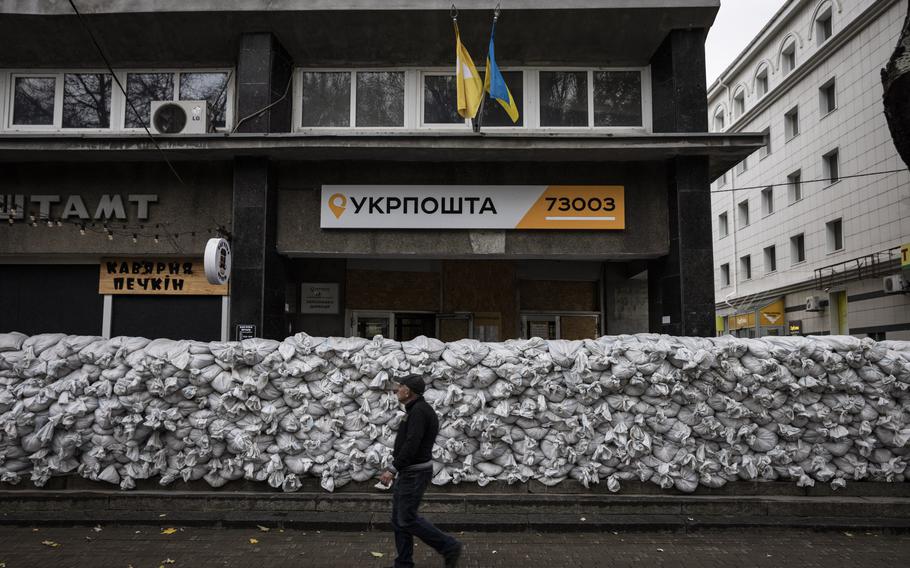
Sandbags stacked in front of a postal-service building in Kherson, Ukraine. (Ed Ram/for The Washington Post)
“Believe me, it is far from normal here,” said Kherson’s governor, Oleksandr Prokudin. “Everything is very depressing. It’s a very tense situation.”
On that day alone, Prokudin said, Russian planes had dropped 30 bombs around the city. About 73,000 residents — roughly 20 percent of the city’s prewar population — remain, he said. “This is terror,” he said. “Pure and simple.”
Among those hurrying home before dark were Iryna Lytvynenko, 46, and Hanna Romanyuk, 38, who work as nurses at a rehabilitation center for disabled children.
The center, which has 13 children, was recently damaged in a strike. The employees made repairs themselves and moved the children to a room that was deemed safer. The center continues to operate.
“It is very loud and scary here now,” Romanyuk said. “Especially at night, when you are with your children and do not know where to run, what to take with you, because you do not know from which direction the bombs are flying from.”
Both women said they had decided to stay in Kherson and hold on, hoping for Ukraine’s victory.
“People here are very united,” Lytvynenko said. “After a shelling, everything is quickly cleaned and repaired. I think we are unbreakable. People with a Kherson soul decided to stay here, those who ache for our old Kherson. This is our city, and it is us who will rebuild it.”
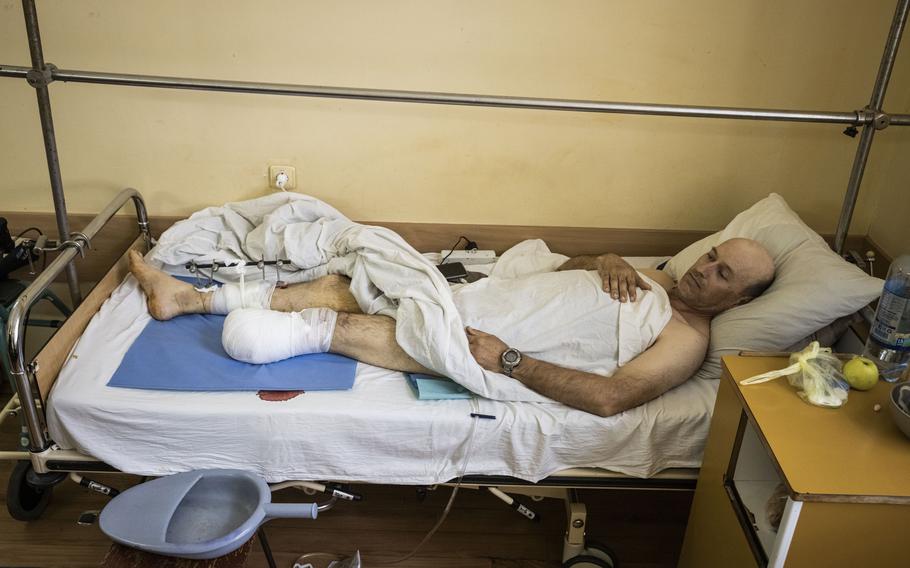
Oleksandr Andrienko, from the village of Kozatske, at a hospital in central Kherson, Ukraine. “Our population is simply being destroyed,” he said. (Ed Ram/for The Washington Post)